|
Israel's
Land Rights
Chapter 3
Legal Rights to the Land
Are the Settlements Legal?, by Eugene W. Rostow, former U.S. Assistant Secretary of State (1966-1969), and former Dean of the Yale Law School. (Consolidated Articles of April 23, 1990 and October 21, 1991 from
The New Republic.)
With varying degrees of seriousness, all American administrations since 1967 have objected to Israeli settlements in the West Bank (Judea and Samaria) on the ground that it would make it more difficult to persuade the Arabs to make peace. President Carter decreed that the settlements were “illegal” as well as tactically unwise. President Reagan said the settlements were legal but that they made negotiations less likely.
(United Nations) Security Council Resolutions 242 and 338. Resolution 242, adopted after the Six Day War in 1967, set
out criteria for peace-making by the parties (to the conflict); Resolution 338, passed after the Yom Kippur War in 1973, makes resolution 242 legally binding and orders the parties to carry out its terms forthwith. Unfortunately, confusion reigns, even in high places, about what those resolutions require.
(Since 1967) Arab states have pretended that the two resolutions are “ambiguous” and can be interpreted to suit their desires. And some Europeans (Russian) and even American officials have
cynically allowed Arab spokesmen to delude themselves and their people—to say nothing of Western public opinion—about what the resolutions mean.
It is common even for American journalists to write that Resolution 242 is “deliberately ambiguous,” as if the parties are equally free to rely on their own reading of its key provisions.
Nothing could be further from the truth.
Resolution 242, which as Under Secretary of State for Political Affairs between 1966 and 1969,
I helped produce, calls on the parties to make peace and allows Israel to administer the territories it occupied in 1967 until “a just and lasting peace in the Middle East” is achieved. When such a peace is made, Israel is required to
withdraw its armed forces “from territories” that it occupied during the Six Day War—not from
“the” territories, nor from “all” the territories, but some of the territories,
which included the Sinai Desert, the West Bank, the Golan Heights, East Jerusalem, and the Gaza Strip.
Five and a half months of vehement public diplomacy made it perfectly clear what the missing definite article in Resolution 242 means. Ingeniously drafted resolutions calling for withdrawals from
“all” the territories were defeated in the Security Council and the General Assembly.
Speaker after speaker made it explicit that Israel was not to be forced back to the “fragile” and “vulnerable” Armistice Demarcation Lines, but should retire once peace was made to what Resolution 242 called “secure and recognized” boundaries agreed to by the parties. In negotiating such agreement, the parties should take into account, among other factors, security considerations, access to the international waterways of the region, and, of course, their respective legal claims.
Resolution 242 built on the text of the Armistice Agreements of 1949,...provided (except in the case of Lebanon) that the Armistice Demarcation Lines separating the military forces were “not to be construed in any sense” as political or territorial boundaries, and that “no provision” of the Armistice Agreements “shall in any way prejudice the right, claims, and positions” of the parties “in the ultimate peaceful settlement of the Palestine problem.” In making peace with Egypt in 1979, Israel withdrew from the entire Sinai,
which had never been part of the British Mandate.
The heated question of Israel’s settlements in the West Bank during the occupation period should be viewed in this perspective. The British Mandate recognized the right of the Jewish People to “close settlement” in the
whole of the Mandated territory. It was provided that local conditions might require Great Britain to “postpone” or “withhold” Jewish settlement in what is now Jordan. This was done in 1922. But the Jewish right of settlement in Palestine, west of the Jordan River, that is in Israel, the West Bank, Jerusalem, and the Gaza Strip, was made unassailable. That right has never been terminated, and cannot be terminated
except by a recognized peace between Israel and its neighbors. And perhaps not even then,
in view of Article 80 of the UN Charter, “the Palestine Article,” which provides that nothing in the Charter shall be construed “to alter in any manner the rights whatsoever of any states or any peoples or the terms of existing international instruments.”
Some governments have taken the view that under the
Geneva Convention of 1949, which deals with the rights of civilians under military occupation, Jewish settlements in the West Bank are illegal, on the ground that the Convention prohibits an occupying power from flooding the occupied territory with its own citizens. President Carter supported this view, but President Reagan reversed him, specifically saying that the settlements are legal but that further settlements should be deferred since they pose an obstacle to the peace process.
The Jewish right of settlement in the West Bank is conferred by the same provisions of the Mandate under which Jews settled in Haifa, Tel Aviv, and Jerusalem before the State of Israel was created. The Mandate for Palestine differs in one important respect from the other League of Nations mandates, which were trusts for the benefit of the indigenous population.
The Palestine Mandate, recognizing “the historical connection of the Jewish People with Palestine, and the grounds for reconstituting their national home in that country,” is dedicated to “the establishment in Palestine of a national home for the Jewish people, it being clearly understood that nothing should be done which might
prejudice the civil and religious rights of existing non-Jewish communities in Palestine, or the rights and political status enjoyed by Jews in any other country.”
The Mandate qualifies the Jewish right of settlement and political development in Palestine in only one respect.
Article 25 gave Great Britain and the League Council discretion to “postpone” or “withhold” the Jewish People’s right of settlement in the
Trans- Jordanian province of Palestine—now the Kingdom of Jordan—if they decided that local conditions made such action desirable. With the divided support of the council, the British took that step in 1922.
The Mandate does not, however, permit even a temporary suspension of the Jewish right of settlement in the parts of the Mandate west of the Jordan River. The Armistice Lines of 1949, which are part of the West Bank boundary, represent nothing but the position of the contending armies when the final cease-fire was achieved in the War of Independence. And the Armistice Agreements specifically provide, except in the case of Lebanon, that the demarcation lines can be changed by agreement when the parties move from Armistice to peace. Resolution 242 is based on that provision of the Armistice Agreements and states certain criteria that would justify changes in the demarcation lines when the parties make peace.
The State Department has never denied that under the Mandate “the Jewish people” have the right to settle in the area. Instead, it said that Jewish settlements in the West Bank violate
Article 49 of the 4th Geneva Convention of 1949, which deals with the protection of civilians in wartime. Where the territory of one contracting party is occupied by another contracting party, the convention prohibits many of the inhumane practices of the Nazis and the Soviets before and during the Second World War—the mass transfer of people into or out of occupied territories for purposes of extermination, slave labor or colonization, for example.
Article 49
provides that the occupying power “shall not deport or transfer part of its own civilian population into the territory it occupies.” But the Jewish settlers in the West Bank are volunteers. They have not been “deported” or “transferred” by the government of Israel, and their movement involves none of the atrocious purposes or harmful effects on the existing population the Geneva Convention was designed to prevent. Furthermore, the Convention applies only to “acts by one signatory carried out on the territory of another.”
The West Bank is not the territory of a signatory power, but an unallocated part of the British Mandate. It is hard, therefore, to see how even the most literal minded reading of the Convention could make it apply to Jewish settlement in territories of the British Mandate west of the Jordan River. Even if the Convention could be construed to prevent settlements during the period of occupation, it could do no more than suspend, not terminate, the rights conferred by the Mandate. Those rights can be ended only by the establishment and recognition of a new state or the incorporation of the territories into an old one.
As claimants to the territory the Israelis have denied that they are required to comply with the Geneva Convention but announced that they will do so as a matter of grace. The Israeli courts apply the Convention routinely, sometimes deciding against the Israeli Government. Assuming for the moment the general applicability of the Convention, it could well be considered a violation if the Israelis deported convicts to the area, or encouraged the settlement of people who had no right to live there (Americans for example).
But how can the Convention be deemed to apply to Jews who have a right to settle in the territories under international law: a legal right assured by treaty and specifically protected by
Article 80 of the UN Charter, which provides that nothing in the Charter shall be construed “to alter in any manner rights conferred by existing international instruments.” The Jewish right of settlement in the area is equivalent in every way to the right of the existing Palestinian population to live there.
The general expectation of international law is that military occupations last a short time, and are succeeded by a state of peace established by treaty or otherwise. In the case of the West Bank the territory was occupied by Jordan between 1949 and 1967 and has been occupied by Israel since 1967. Security Council Resolutions 242 and 338 ruled that the Arab states and Israel must make peace, and that when “a just and lasting peace” is reached in the Middle East, Israel should withdraw from some but not all of the territory it occupied in the course of the 1967 war. The Resolutions leave it to the parties to agree on the terms of peace.
Article 80 of the UN Charter permits Israel to ignore both UN Resolutions 424 and 338. Jewish land rights granted by the League of Nations’ British Mandate cannot be annulled by the United Nations. Israel is only required to recognize the civil and religious rights of the Arabs in the Land.

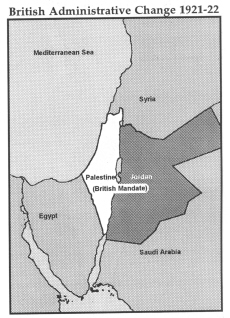
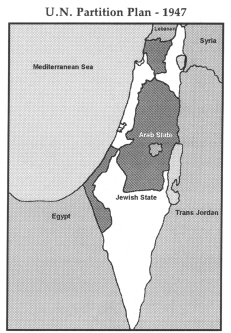
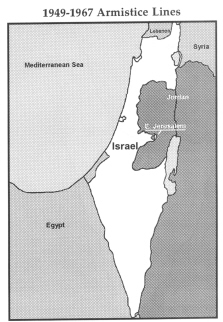
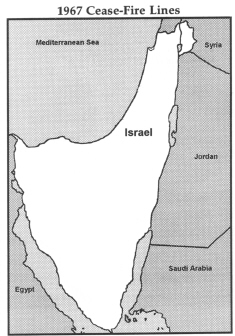
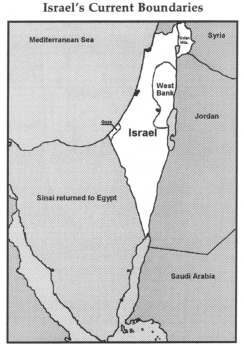
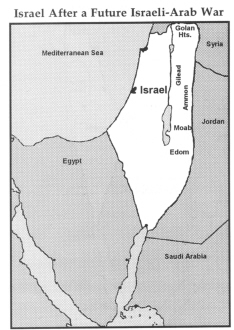
|